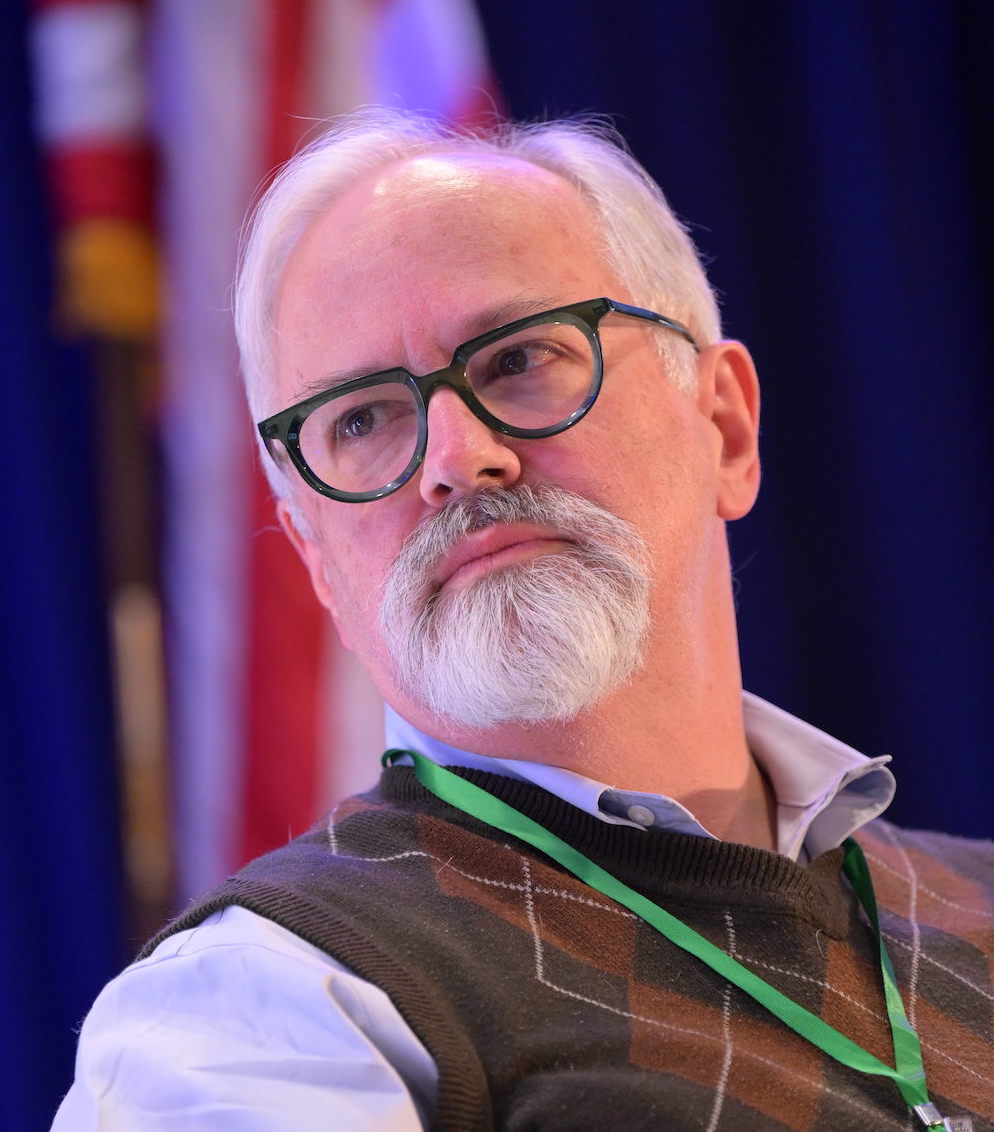At a recent First Nations conference he attended in Canada, Dr. Richard Luarkie noticed something was missing—almost no one mentioned sovereignty.

“Here in the lower 48, we assert sovereignty every other sentence: ‘We're sovereign. We’re sovereign. Yet we need our grant money,’” he said.
The contradiction, Luarkie says, forms the crux of a challenging question for Native nations: What good is sovereignty if you lack the resources to exercise it?
Luarkie, a former governor of the Pueblo of Laguna and current director of the Native American Mining and Energy Sovereignty program at Colorado School of Mines, recently co-authored a policy paper that challenges tribal orthodoxy: Native communities need to stop merely asserting sovereignty and start demonstrating significance on the global stage.
In a conversation with Tribal Business News, Luarkie outlined how tribes can transform from grant-dependent entities to economic powerhouses by moving beyond program administration to true economic integration. This interview has been edited for length and clarity.
Your paper frames today's geopolitical turbulence as an opportunity for Native nations. What made you write this now?
As the saying goes: Never let a good crisis go to waste. I see the potential and opportunity to execute sovereignty at a whole new level, using energy and technology as a catalyst. When we think about our cultural influence and connection to the land, environment and resources, who better to develop those resources, if they are to be developed, than Native nations?
The federal government manages over 56 million acres of land and 57 million acres of subsurface minerals in the U.S. for tribes. Native nations have two of the biggest wealth-building assets — land and minerals — yet tribes are still collectively the poorest demographic in the nation. The paper shines a light on the opportunity to change that trajectory. We need to move from programmatic economic development to systems thinking and economic integration.
The paper suggests tribes could become ‘significant allies’ of the U.S. — that’s an interesting phrase. What strategic advantages can tribes bring beyond their land and minerals?
Like the energy transition, we need to have a sovereignty transition. Public Law 93-638 (the Indian Self-Determination and Education Assistance Act) established our ability to self-determine, but significance will demonstrate our ability to execute. We now have professional capacity, resources, talent and infrastructure. Self-determination without the resources to execute is meaningless — zero plus zero is still zero.
A number of tribes, including my own, have long histories in mining and have no interest in new mining. However, we could take the post-mining approach with a circular economy, the waste-to-value model, and contribute to addressing the critical minerals dilemma our country faces, and clean the environment at the same time. This would be an example of using our own capacity to execute on our own terms.
Tribes have policy tools like Public Law 93-638 and the Tribal Energy Development Organization (TEDO) status that can streamline paths to negotiating rights of way and leases. These tools can help to align with this administration's initiative to eliminate red tape and improve development and permitting efficiency, but they also put tribal nations in the driver’s seat to determine their own path.
What's your pitch to the Trump administration to ensure tribes get a seat at the table?
I'm seeing many letters to the administration saying, “We need to protect our grant funding, our political status” — which is true — but I don't see very many solutions being offered.
I believe there is an opportunity to revisit, reimagine, and re-engineer the current programs, services, and regulatory frameworks that have historically handicapped economic progress for our Native nations. I see opportunities to create partnerships that position Native nations to implement their own solutions, execute their strategies, and create pathways that position them to be significant allies of the United States in technology, energy security, and economic integration. Tribes must take advantage of this moment to modernize our economic systems and transform from economic development to economic integration.
What does economic self-sufficiency look like in practice for Native nations?
In tribal communities, economic development and business development are used interchangeably, but in reality, they're different. Economic development is primarily a government function — creating conditions for success through taxes, laws, regulations, and infrastructure. Business development is about generating revenue from the market and market growth. Most tribal economic enterprises exist primarily to provide funding to the tribal government, which, in turn, provides programs and services to the community. The challenge this creates is that there is limited to no investment in tribal member entrepreneurs and innovators. This investment can begin to pave a new and wider path to economic self-sufficiency.
So, what economic self-sufficiency looks like in the next generation is a model that includes community innovators, businesses, and private-sector economy building. I have always said that most tribes don’t have economies; we have programs and services. This is because all the bigger economic opportunities are controlled by the tribal government.
Another important element is how the tribal government extends its status to tribal member businesses that have 8(a) federal contracting firms or are simply owned by tribal members. With the move to dismantle the DEI programs at the federal level, it is imperative that tribal governments protect their tribal-member businesses that have 8(a) or any other minority designation so they don’t get dismantled by the DEI shutdown.
It has been made clear that the elimination of DEI programs does not apply to tribes, but it is unclear whether this same protection extends to tribal members. This engagement and advancement of tribal member-owned businesses will allow tribal members to participate in the economic prosperity of the tribe and strengthen economic self-sufficiency. This will be the next-generation image of tribal economic self-sufficiency.
The big takeaway here seems to be that tribes need to change how they think about sovereignty. How so?
For so long, we've used sovereignty as a shield, for good reason. But we also need to understand how to use it more as a sword. Not as a sword to butcher, but as a sword to blaze new trails and remove barriers that have hindered Native nation progress. Is sovereignty just a simple legal foreign construct that we abide by in a box? Or is it something we can operationalize to advance our societies, communities, resources and relationships?
At a conference with First Nations in Canada, I noticed they barely mentioned sovereignty or economic development. Here in the lower 48, we assert sovereignty in almost every sentence. We are at a time when we need to embrace the Nike slogan and “Just Do It.”
When I think about tribal sovereignty, I'd say it's a mile wide and an inch deep because it only applies to our tribal government. It doesn't include the individual tribal member. We need to engage the strength and knowledge of our tribal citizens, celebrate them and engage their agency — it's their agency that empowers sovereignty.
You mention the Southern Ute Tribe as a co-author of this paper. What makes them and other tribes successful examples of this sovereignty-to-significance transition?
The Southern Ute Indian Tribe and the Southern Ute Growth Fund have been an incredibly bright lighthouse for Native nations. Understandably, what has worked for one tribe may not work for others. However, they understand the need to separate governance from business, that trust serves as the bridge between government and business, and how to stay in their lanes. They've choreographed this dance extremely well.
The Chickasaw Nation is another great example. With the long tenure of their leadership, they've had continuity and consistency, have moved vision to implementation, and have cultivated trust and stability in their initiatives. Many tribes change leadership every couple of years, creating instability. Continuity also creates mutual trust between the economic enterprises and the government leadership.
There are several other tribes that have figured out how to balance the strengths of both government and business. They've invested in their people and given them a chance. They recognize this is a long-term investment. Building trust, consistency, and capacity is just as important as building a solid business.
What metrics would you use to determine if a Native nation has successfully transitioned from sovereignty to significance?
I'd start with a metric I wouldn't use — poverty. Culture is very important, and we come from strength, not deficit.
Metrics would include population growth, strength in the “community balance sheet,” growth in land base, economic diversification, and language revitalization. Right now, most tribes operate on an income statement — how much are we getting in and how much is going out — versus building wealth. By building a Native nations balance sheet that is inspired by a collective geopolitical, economic, and sovereign wealth fund would be a great asset and metric to have.
I also believe metrics that show significant improvements in human and environmental health will be essential to focus on. We want to see a health system and, ultimately, a society living better and healthier — not just longer. These would be different and more meaningful metrics to track.
